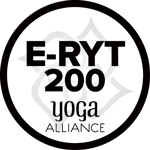About Me
My journey as a wellness practitioner is deeply rooted in personal experience. A severe ankle injury that required four surgeries and left me immobilized for over four months became a profound turning point in my life. Those months of limited mobility were deeply humbling, yet it revealed an inner strength I hadn't previously recognized.
During my rehabilitation, I discovered the incredible potential of integrating yoga, meditation, and self-myofascial release. These practices weren't just physical techniques, but pathways to deeper self-understanding and healing. Each adapted pose, each mindful breath became an act of reclaiming my body and spirit.
My personal experiences fundamentally reshaped my approach to wellness. I learned that healing is not linear, but a complex, multidimensional journey. The injuries I navigated became my greatest teachers, revealing capacities for adaptation and resilience I never knew I possessed.
This journey inspired my diverse practice - blending yoga therapy, massage, meditation, and eco-therapeutic approaches. Each modality represents a different pathway to understanding the intricate connections between physical, emotional, and spiritual well-being.
My curiosity about life, spirituality, and human potential continues to drive my work. Every challenge becomes an opportunity for growth, every limitation a doorway to deeper understanding. Through my own healing, I've learned that true wellness about embracing our full, complex human experience.
I have been practicing yoga for over 20 years and instructing for over a decade. I have over 2000 hours of training:
Student of Iyengar Yoga with an emphasis on Restoratives and Inversions (1997-2001)
Anusara/Hatha teacher training with former senior teacher, Katchie Ananda (2013-2014)
800-hour Yoga Therapy teacher training through the Niroga Institute (2015-2016)
Vippasana meditation retreats (2015-2016)
Buddhist and Hindu philosophy and Insight meditation with Will Kabat-Zinn and Sean Feit Oaks (2015-2019)
Partner yoga and Thai massage workshops and retreats with Alok Rocheleau and Anjeli Mahendra (2017-2018)
Thai Massage Training Level 1, Thai Massage School Shivagakomarpaj in Thailand (2019)
Thai Massage Training Level 1 and 2 Certification through Still Light Center (2020-2021)
Student of Morehouse, an intentional community focused on group living and self-awareness (ongoing)
The yoga therapy components of my yoga and meditation instruction are based on the IAYT, not derived from my status as an RYT® with Yoga Alliance Registry.
Through my journey toward self-understanding and self-care that I found with yoga, I am now experiencing living at my ideal weight. While weight loss is not my primary focus as a yoga instructor, I welcome the opportunity to work with those seeking a healthier relationship to food. I am inspired to offer guidance, support and accountability, working together with you to discern the difference between physical hunger and spiritual hunger.
As a child and young adult, I was overweight and struggled with my self-esteem. I used food as an anesthetic to self-soothe and cope with the stress of life. In my early twenties, at a doctor’s visit, I was shocked and scared when I was told that I was technically obese.
And then I found yoga. Every day in class was a new exploration of sensations that connected me more and more to myself. As my practice deepened I learned to appreciate my body and take better care of it. In my late twenties I found myself ready to make some big changes to my eating habits. Around that time I also began studying Buddhism and yogic philosophy. Moderation is a central principle of these philosophies. The Buddha called it the Middle Way – the path between the extremes of self-indulgence and the subjugation of appetites or desires by self-denial. Yoga Sutra II.38 says that a balanced life is characterized by moderation in all things.
I began listening to my body when it was full, eating smaller portions, and doing periodic cleanses. My body felt better, movement was easier, and my mental and physical health improved.
From there, my eating habits further evolved due to my observations about the state of the planet. In Buddhism and Hinduism, Ahimsa means respect for all living things and avoiding violence towards others. Along with the yoga postures, Ahimsa is part of the eight-limbed yoga path. For me, the decision to eat ethically means having a whole-foods, plant-based diet with almost no animal products.
All exercise, including yoga, can support weight loss if done in tandem with healthy eating habits. The gift of yoga is that it offers both a physical practice of exercise and guidelines for how to eat in ways that are healthy for ourselves, animals and the planet.



